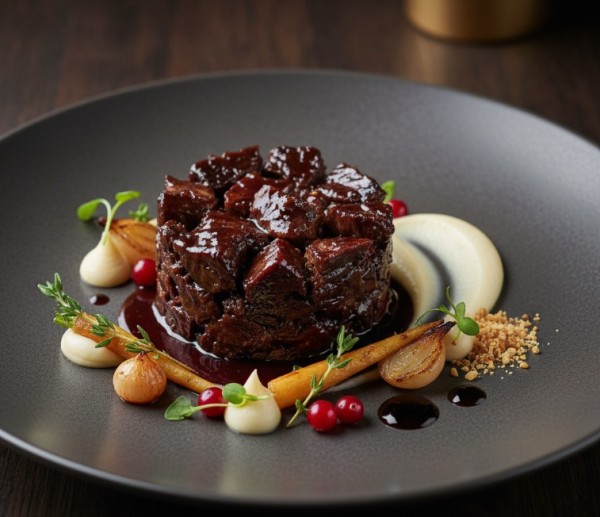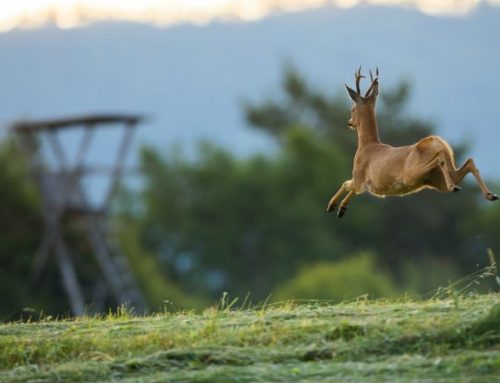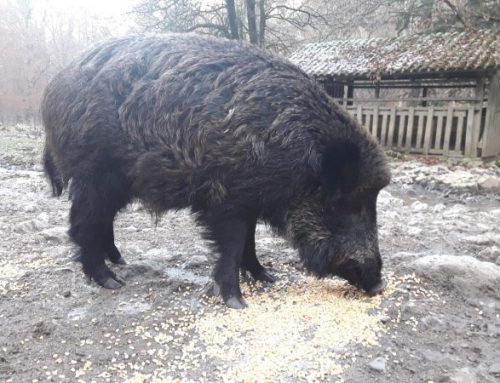Every hunter knows: the moment of the shot is only the beginning. True respect for the animal shows afterward, in the way its meat is treated and valued.
Knowing the best game cuts means making conscious choices—not just for taste, but out of respect for the wild. It’s not just about “eating meat,” but about preserving a cultural, gastronomic, and identity heritage.
If you truly want to learn how to cook game properly, it all starts with understanding the cuts, the differences between species, and the techniques best suited for each part of the animal. Roe deer, fallow deer, wild boar, but also red deer, chamois, and mouflon: every game animal has its own story, texture, and flavor.
Let’s look at them in detail.
Roe Deer: Tender and Aromatic
Roe deer is one of the most appreciated game animals in the kitchen for its lean, flavorful, and delicate meat. It is suitable for many preparations, but it’s important to know which parts are best for each use.
- Leg: the most versatile cut. Suitable for slow cooking such as braises and roasts, but also for quick cooking or sliced steak, if properly aged.
- Saddle: very prized, tender, ideal for rare or medium-rare cooking. Excellent also as medallions or fillets.
- Shoulder: slightly tougher, but perfect for stews, ragù, and braised dishes.
- Neck: rich in connective tissue, ideal for broths, stews, and terrines.
Among ungulate cuts, roe deer is considered the most elegant, almost like farmed red meat but with an unmistakable wild identity.
Fallow Deer: The Noble Unknown
Less well-known but absolutely worth rediscovering, fallow deer offers delicate, slightly sweet meat, with a firmer texture compared to roe deer.
- Leg and Loin: ideal for roasts and fillets, cooked in a pan or oven.
- Shoulder: best marinated and cooked slowly, perfect for stews and rich ragù.
- Breast and Neck: often underestimated but full of flavor. Excellent for rustic preparations, game meatballs, burgers, or pâtés.
This meat also lends itself well to modern techniques, such as light smoking or low-temperature cooking. A well-prepared fallow deer cut delivers a delightful surprise in every bite.
Wild Boar: Strength, Character, Depth
Wild boar meat is intense, dark, with strong flavors. Not for everyone, but for those who love it, it’s irresistible. It requires skill to master.
- Leg: perfect for pot roasts or oven roasting, with long marinades.
- Shoulder: rich and properly fatty. Ideal for stews, salmì, and hunter-style preparations.
- Neck and Breast: less prized, but very aromatic. Excellent for ragù, game sausages, and hearty sauces.
- Saddle: reserved for those who enjoy refined cooking. Can be cut into fillets, grilled, or seared in a pan.
When it comes to cooking game, wild boar requires attention to marinating and aging. It’s important to balance its strength with the right aromatics: bay leaf, juniper, pepper, rosemary.
Red Deer: Elegance and Power
Imposing and majestic, red deer offers robust and aristocratic meat. It requires experience, both in hunting and in the kitchen. But when it reaches the plate… it’s pure poetry.
- Leg: exquisite, to be cut into steaks or slices. Excellent for medium cooking.
- Saddle and Rack: exceptionally elegant. Best appreciated with short cooking times or low-temperature techniques.
- Shoulder: ideal for significant braises or long stews.
- Neck: perfect for pâtés, terrines, and deeply flavored ragù.
Note: meat from mature deer can be strong. In this case, long marinades and slow cooking become essential.
Chamois and Mouflon: For Experienced Palates
These are not meats for everyone. Chamois has intense, almost “wild” flavors, with a firm and dry texture. Mouflon, more rustic, has a taste reminiscent of mature lamb, but with a more pronounced aromatic note.
These animals should be prepared with respect and moderation.
- Best cuts: loin and leg, to be cooked carefully and possibly sous-vide to preserve aromas.
- Shoulders and breasts: suitable for hearty preparations, to be paired with strong flavors (red wine, root vegetables, chestnuts, mushrooms).
Better to avoid them if you have “novice” game eaters as guests: the intensity of the flavor may be overwhelming.
The Right Cut for Each Dish
Here’s a general guide to help choose the right cut:
- Saddle/Loin Medium-rare, pan-seared Fillets, medallions, game roast beef
- Leg Roast,sliced steak, stew Wild boar roast, braised roe deer
- Shoulder Braised, long cooking Stews, salmì, ragù
- Neck Stews, broths, pâté preparations Ragù, game sauces, pâté
- Breast Gratin, breaded, grilled Rolls, meatballs, roasts
From Carcass to Plate: Respect and Mastery
Knowing the best game cuts is an act of skill and respect. But there’s another fundamental aspect to remember: post-harvest care. The quality of the meat doesn’t depend only on the animal or the shot, but also on how it is handled after the hunt.
An animal not properly bled, left too long with the organs inside, or exposed to the sun for hours develops a “strong” flavor that many generically call “gamey,” but which is actually the result of poor handling.
The conscious hunter-chef knows that the goodness of the meat starts in the forest and continues in the kitchen.
La Montefeltro’s Recipe
Venison Scaloppine with Brown Butter, Jerusalem Artichoke Cream, and Myrtle Reduction
Servings: 4
Total Time: 90 minutes
Difficulty: High
Ingredients
For the venison scaloppine:
- 600 g venison sirloin (thinly sliced)
- 40 g clarified butter
- 1 tbsp extra virgin olive oil
- Maldon salt and Sarawak black pepper
- 1 sprig fresh rosemary
- 1 clove garlic, unpeeled
For the Jerusalem artichoke cream:
- 300 g Jerusalem artichokes, peeled and diced
- 1 shallot, finely chopped
- 200 ml whole milk
- 30 g butter
- Nutmeg to taste
- Salt and white pepper to taste
For the myrtle reduction:
- 250 ml red myrtle liqueur
- 1 tsp chestnut honey
- Zest of 1 untreated orange
- 2 crushed juniper berries
To garnish:
- Red beet or sorrel sprouts
- Drops of reduced brown stock (optional)
Instructions
1. Prepare the myrtle reduction
In a small saucepan, combine the myrtle liqueur, honey, orange zest, and juniper berries. Slowly bring to a boil, then reduce to low heat and simmer until syrupy (about 20–25 minutes). Strain and set aside.
2. Make the Jerusalem artichoke cream
Gently sauté the shallot with butter, add the Jerusalem artichokes, lightly season with salt, and cover with milk. Cook over medium heat until tender. Blend until smooth and velvety, adding a touch of nutmeg. Adjust salt and pepper. Pass through a fine sieve for a restaurant-quality texture.
3. Cook the scaloppine
Pat the venison slices dry with paper towels. In a cast-iron or stainless steel pan, heat the oil and clarified butter. Add garlic and rosemary to infuse flavor. Quickly cook the scaloppine (maximum 30–40 seconds per side), leaving them pink in the center. Season with salt and pepper at the end.
4. Plate elegantly
Spread a base of Jerusalem artichoke cream on the plate. Place two folded scaloppine on top in a wave shape. Using a teaspoon, create drops of myrtle reduction around. Add a few sprouts for freshness and, if desired, a drizzle of reduced brown stock.
Game in the Kitchen – Chef’s Notes
Venison requires short cooking times to remain tender: do not exceed them. The myrtle reduction can be substituted with a Port or Marsala reduction for more classic variations. Jerusalem artichoke enhances the sweet notes of the game and brings balance to the dish.
Serve with a full-bodied red wine, such as a Teroldego Rotaliano, an Alto Adige Pinot Noir, or a French Bordeaux.
If you want to bring the true soul of the forest to the table, don’t improvise. Knowing the cuts, respecting the raw ingredients, and choosing the right preparation is the key to transforming every meal into a ritual.
Montefeltro is this: hunting, ethics, culture, flavor.










